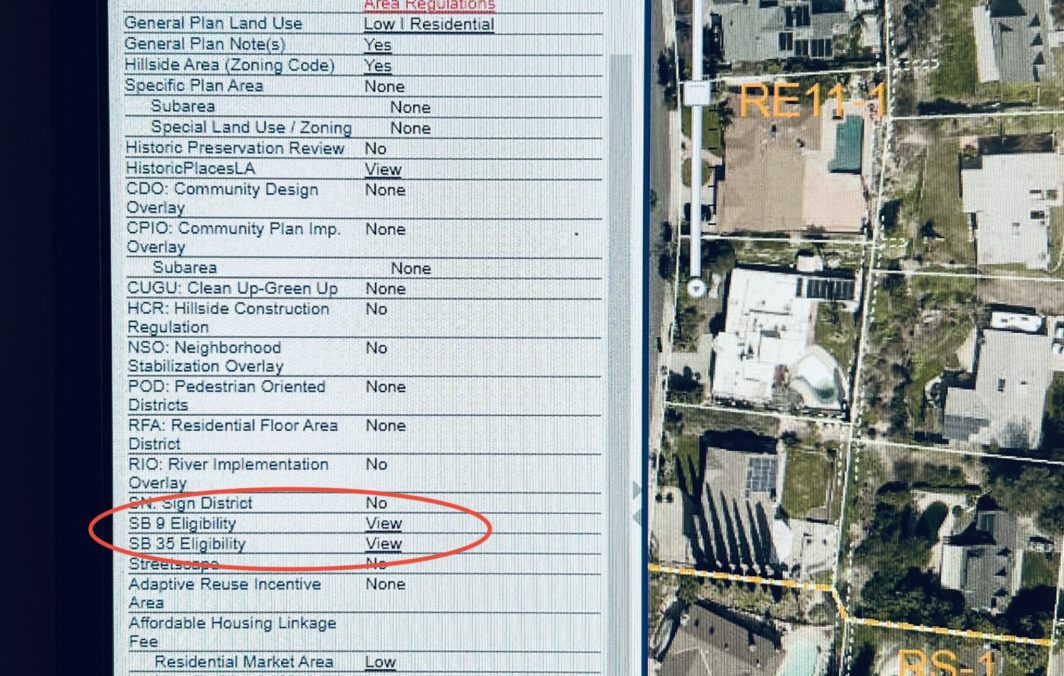
As previously reported Sacramento passed a law late last year that requires cities counties and other municipalities to approve the creation of up to 4 homes where 1 dwelling unit currently exists beginning Jan. 1. The state allowed the local governments to exempt certain areas for specific reasons including but not limited to fire/life/safety concerns historic preservation and Coastal resources.
Most local governments issued their regulations on how it would implement SB9 (as the law is known) in their jurisdiction before or on Jan. 1. The city of Los Angeles has not although executives in the City Planning Department told PCC early last month that the regs would be released “soon.”
However there is information now available that can help. City Planning recently updated its ZIMAS website so that parcels have a “SB9” link which lists 19 criteria that the subject parcel will be reviewed against to determine whether it is eligible for a fast-track lot split and development via SB9. And City Planning has already filled in the checklist so property owners can see at a glance whether their parcel will be eligible for SB9 development.
As expected the city is exempting large swaths of residential neighborhoods negating the new state law for those property owners. Properties in HPOZs and multi-family zones can’t file for a SB9 lot development. Properties in the city’s very high fire hazard severity zones 100-year flood zones earthquake fault zones and that serve as a habitat for protected species are all ineligible too. And if the property isn’t located within a ½ mile walking distance of either a major transit stop or high-quality transit corridor, the property owner will be required to provide at least one new parking space on-site for every new dwelling unit.
Property owners with parcels that are eligible for SB9 development will be able to split a lot with their single-family dwelling into two lots and then construct up to two dwelling units per lot. SB9 also instructed local governments to process these developments administratively which could potentially save significant time for property owners not to mention the headache of going through multiple public hearings. Owners who maximize their lots in this way will be required to file a covenant guaranteeing that they will reside in at least one of those four dwelling units for at least 3 years.
Still to come: SB9-specific applications and guidelines with guarantees for how these developments will be processed expeditiously.